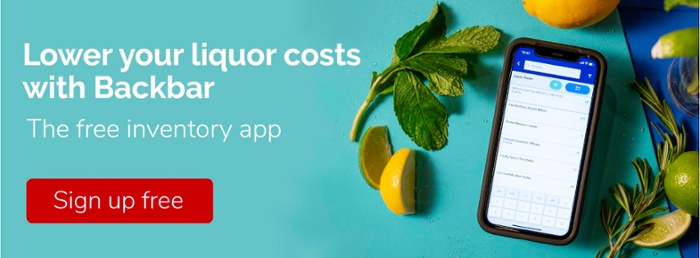If you're a new bar manager, you might be feeling overwhelmed with all the new responsibilities, so we're going to highlight 5 tips to focus on behind the bar to make things a little easier.
One of the most important new responsibilities you'll have is managing your bar inventory.
Inventory is key behind the bar, you can't let it control you, you have to control it. That means you can't buy any new mezcal just because it was distilled in an abandoned Pizza Hut or anything that a sales rep brings in and lets you taste.
That's because overstock is going to kill your profits and drive your liquor costs up. Below we will highlight tips to control inventory and keep costs low.
Consistent Inventory Schedule
One of the best ways to control inventory is to always know what you have on hand. The best way to do this is to keep a consistent schedule.
The most common strategy for this is an opening and closing inventory method. So at the end of the month on the last day of the month, you'll take a full inventory of all of your bar products. And then the following month on the last day you'll take another inventory, this will show you how much you've used of a product in that time period.
If you want to be more specific, you can take inventory on a 4 week schedule, so each inventory session has an equal amount of days in between. Whichever method you prefer, keep it consistent so you understand how much product you use in that time.
For smaller bars, you might also take inventory weekly. If you're a larger bar and that is too much to handle, you might consider doing a spot or abbreviated inventory, where you're taking a look at your inventory counts in order to place orders with your distributors each week.
Cost Your Drinks
The second tip for managing your inventory is to cost your drinks. This means knowing what each item behind your bar costs you when you pour it. Whether it's an ingredient, beer, or a glass of wine, you have to know what it costs you to pour that, so you can properly price the item on your menu.
Tracking your liquor costs keeps things affordable for guests and shows you where your bar is performing well and where it could use improvement. This could mean getting rid of items that don't turn a profit and keeping cocktails from becoming too expensive with too many ingredients.
Measurements
The third tip for managing inventory behind the bar, is all about measurements. What's really important for bartenders to do, is to jigger their pours.
Behind the bar, waste is a silent killer, and waste could come from spillage, broken bottles, or returned drinks from customers.
But one of the most common forms of waste is overpouring. This is when a bartender, maybe even unknowingly, pours too much liquor in a drink or pours too much of another ingredient in a drink. The costs on these drinks will skyrocket and the profits from the sales won't cover it. So holding your bartenders accountable and measuring drinks will reduce the amount of waste.
Track Usage Rates
The fourth tip for controlling inventory behind the bar is to track usage rates. This is one of the most important things you can do, because when you take inventory, it's more than just getting a head count for the number of bottles you have in your liquor room or behind the bar.
You want to understand how quickly you go through a product and usage rates are the best way to do that. In order to track usage rates, you're going to have to keep a consistent inventory schedule which is where performing opening and closing inventory is helpful to know how much product you are going through in a certain time period.
To find out the usage rate, you'll have to use a formula that also includes tracking the purchases you've made between your opening and closing inventories.
The formula for usage rate is:
Opening Inventory + Purchases Received - Closing Inventory
Set Par Levels
The fifth and final tip for helping control inventory behind the bar is to set par levels. A par level is essentially the amount of an item you need on hand at any given point to meet demand.
In order to set par levels, you'll need to know what your usage rates are.
The key to managing inventory is having knowledge of your inventory, so make sure you stay in control by keeping a consistent inventory schedule and using data like par levels and usage rates to help you make better decisions and to make sure your liquor room never gets out of control.
-1.jpg?height=400&name=alcohol-bar-beer-1283219%20(1)-1.jpg)


